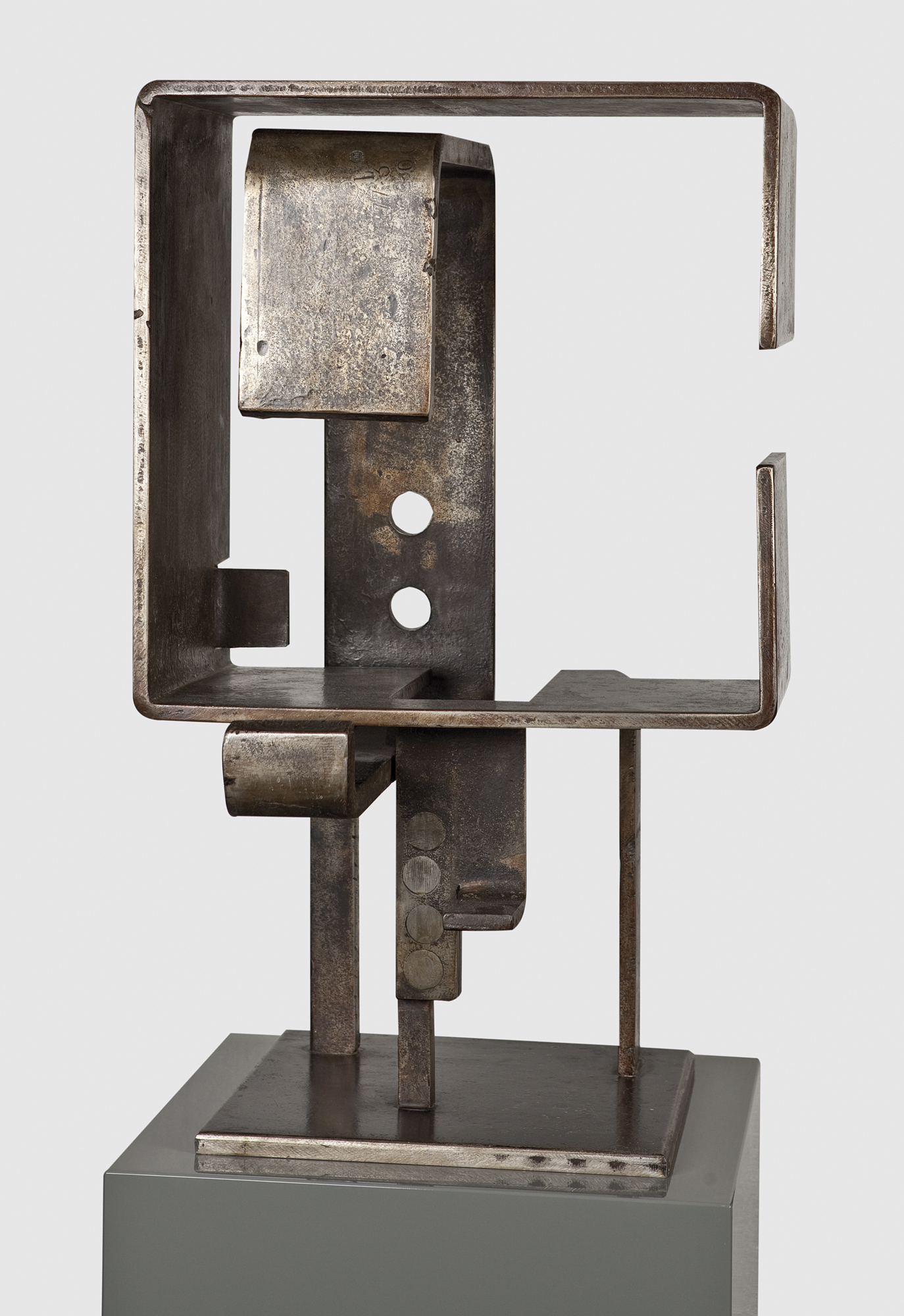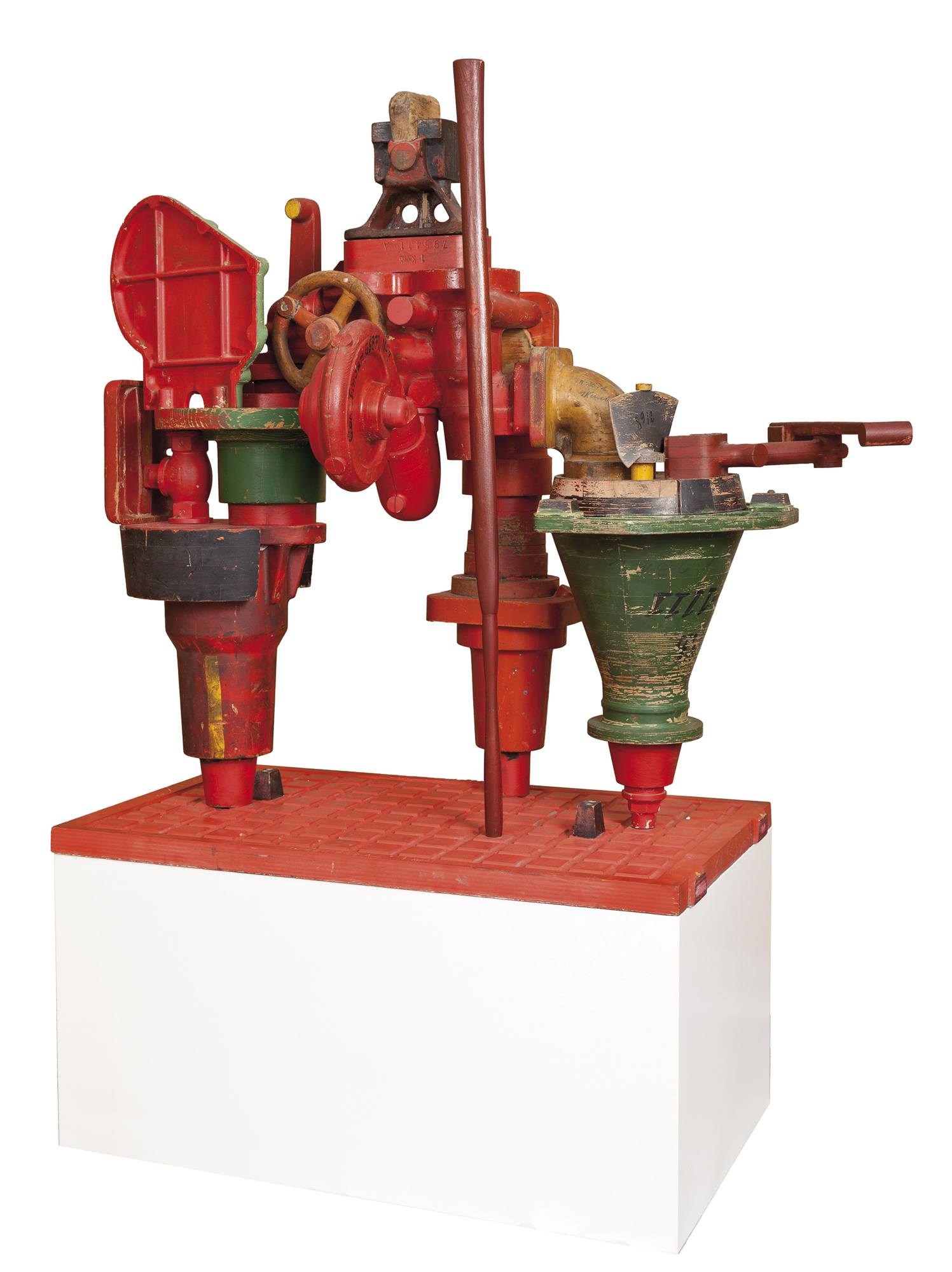From a Bern family with a modest background (his father was a butcher), Bernhard Luginbühl precociously embraced an artist’s career. He drew a lot right from when he was very young, and filled diaries with his intimate writings. In 1945 he decided to devote himself to sculpture. His stonecutter’s apprenticeship provided him with the practical tools needed to pursue his self-taught training. He began by sculpting busts and figures in stone and wood – youthful works, almost all of which he would later destroy – before he launched into working with metal. In 1949, during the Kunsthalle Bern’s traditional Weihnachtsausstellung, he presented an iron bull made of sheets soldered together, which created a strong impression, and he decided to persevere working in this material.
His encounter with Jean Tinguely in 1957 was decisive and marked the beginning of a long friendship and a deep artistic complicity. From 1960, the pair collaborated on joint projects on many occasions (at the Kunsthalle Bern, Centre Georges Pompidou in Paris and at Milly-la-Forêt). Although less keen on kinetics than his friend and more of a purist when it came to the choice of materials, Luginbühl would progressively imagine increasingly monumental abstract sculptures, up until creating his sculpture park in 1990 in Mötschwil (today managed by the Bernhard Luginbühl Stiftung), where sixty rusty, chimerical figures rub shoulders.
His oeuvre, of an extraordinary creativity, rapidly acquired international recognition and travelled to Italy, Germany, the United States and even Japan and Australia. With Tinguely, but also with Robert Müller, and Spaniard Julio González, their predecessor, they embody the pioneers of the use of metal – iron and steel – in the artistic domain. Sculptor, visual artist, designer, engraver and film director, Bernhard Luginbühl created an oeuvre in his own image, powerful, imposing and expressive.
His encounter with Jean Tinguely in 1957 was decisive and marked the beginning of a long friendship and a deep artistic complicity. From 1960, the pair collaborated on joint projects on many occasions (at the Kunsthalle Bern, Centre Georges Pompidou in Paris and at Milly-la-Forêt). Although less keen on kinetics than his friend and more of a purist when it came to the choice of materials, Luginbühl would progressively imagine increasingly monumental abstract sculptures, up until creating his sculpture park in 1990 in Mötschwil (today managed by the Bernhard Luginbühl Stiftung), where sixty rusty, chimerical figures rub shoulders.
His oeuvre, of an extraordinary creativity, rapidly acquired international recognition and travelled to Italy, Germany, the United States and even Japan and Australia. With Tinguely, but also with Robert Müller, and Spaniard Julio González, their predecessor, they embody the pioneers of the use of metal – iron and steel – in the artistic domain. Sculptor, visual artist, designer, engraver and film director, Bernhard Luginbühl created an oeuvre in his own image, powerful, imposing and expressive.

